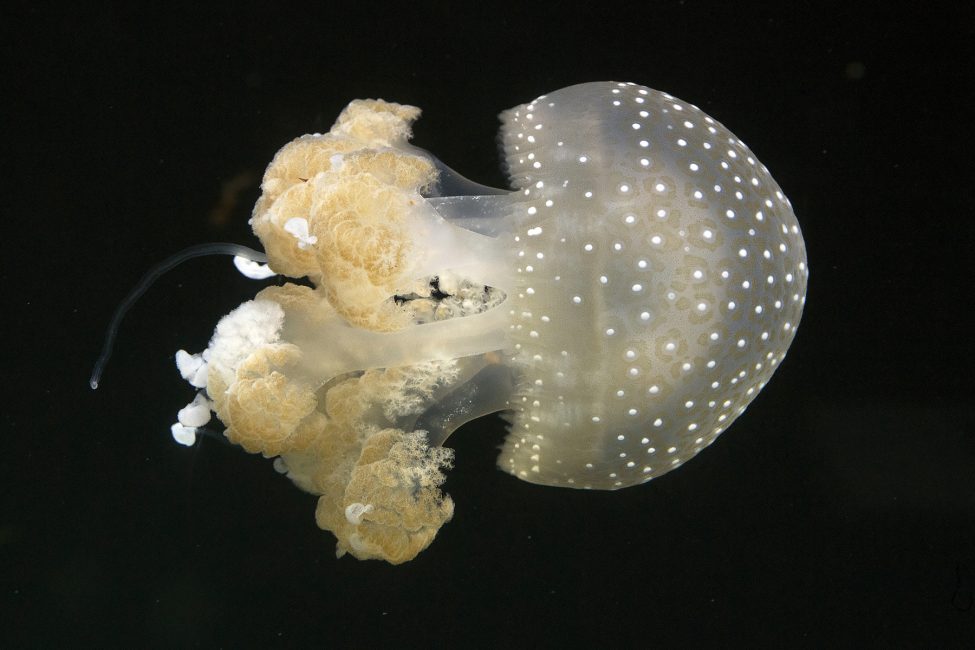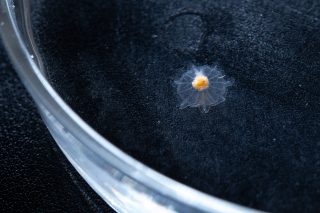
June 6, 2023
Bringing Up Baby Jellies
- as seen by -
 Cora Monroe
Cora Monroe
What visitors see in our habitats at the Wildlife Conservation Society New York Aquarium’s Spineless exhibit is called the medusa stage of a jelly’s lifecycle.
Composed of a bell and tentacles, this life stage typically pulses about in the water column (unless they are a more stationary species such as the upside-down jelly, Cassiopea). The medusa produces sperm and eggs, which fertilize in the water column. The eggs develop into planula larvae, whose goal is to attach to a surface where they may turn into polyps. Polyps look similar to anemones and can asexually reproduce. The polyps then produce ephyrae, which look like little flowers developing on the tips of the polyps. This process is called strobilation. Once released from the polyps, ephyrae grow into the medusa stage (above, Australian spotted jelly, Phyllorhiza punctata).
Here at the aquarium, we collect ephyrae from our polyps in order to culture moon jellies, Aurelia aurita, and Australian spotted jellies in our behind-the-scenes propagation area. Collecting these ephyrae takes a sharp eye for detail, as they start off around 1-2 mm in diameter, about the size of a sharp pencil point.
EDITOR’S NOTE: Read part 2 of our jelly aquaculture here.
Nikon D6




Leave a Comment